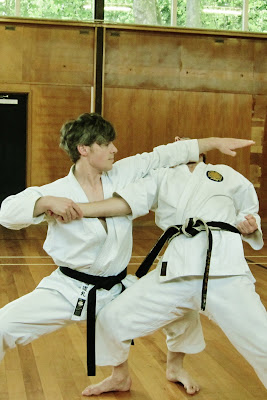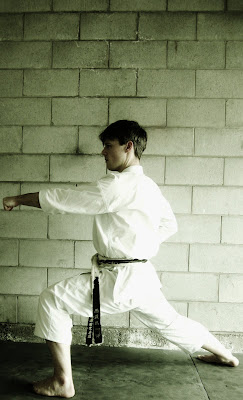Introduction
The science of educational psychology is primarily concerned about the connection between the cognitive development of learners, and the environmental influence of varying
pedagogies, which
controllably nurture that development. Particularly useful for understanding this relationship is the information processing model which intrinsically represents the human memory system (Mayer, 2008). Fundamentally steered by the cognitive psychological approach, this essay will endeavour to analyse the critical importance of attention in the learning process. This will be achieved by explaining what attention is, how absolutely vital attention is to learn, and lastly, what some of the implications are for establishing a formal learning environment.
What educational psychology tells us about attention?
Educational psychology tells us that attention is the channelling of mental power by which we select specific stimuli from the environment. The capacity of human attention is very limited and this is why anything that does not elicit our mental focus swiftly evaporates out of the memory system, as it fails to surpass the limitations of the all-encompassing sensory register. When considering that the sensory register is constantly being bombarded by various movements, smells, sounds, tastes, feelings and so forth, it becomes readily apparent that if our attention was being shared by all incoming stimuli it would be impossible to adequately achieve any tasks (
Woolfolk, 1998). Cherry and Norman (as cited in
Ormrod, 2006) provide a vivid illustration of the highly limited capacity of human attention via what is sometimes referred to as the cocktail party phenomenon. In this example there are multiple conversations going on simultaneously in a room, however it is only possible for each individual to sufficiently engage in one of them. This scenario brings to light the critical issue of mental selection. Depending on the stimuli, sometimes selection is voluntarily made, yet at other times attention is involuntarily attracted. In the case where learners intentionally attend particular information, it is typically to achieve the goals, which they themselves are motivated to achieve, or things of vested interest (
Fetsco & McClure, 2005). Alternatively, the involuntarily focus of our attention may be attributed to an unexpected aversive behaviour such as startling yell or obnoxious smell. Without the cognitive processing component of attention we would be unable to achieve any meaningful tasks, as this deficit would result in the inability to focus on any particularities for less than a brief moment. Attention is therefore the only means of actively selecting information absorbed from our senses, with any significant analytical depth, and for any productive length of time.
 How important is attention in the learning process?
How important is attention in the learning process?
The importance of attention cannot be overemphasised as it is the initiator of all learning experiences. It is the mental vehicle which enables perception and etches information progressively further into the memory system.
Ormrod (2006) explains that the first stage in the learning process is paying attention, which actively pulls mentally illuminated information into the working memory. Anything which enters the sensory register and fails to attract, or actively receive a person’s attendance, rapidly vanishes from the mind. Once stimuli have been selected from the environment by the learner’s attention, the information then perceived immediately crosses over into the working memory, which is the conscious phase of information processing. This transition is absolutely critical as the working memory is synonymous with what is commonly referred to as thinking. Without any exaggeration this highlights the vital importance of attention as the trigger for mental analysis and is thus the precursor for learning, and studious behaviour in general (
Hohn, 1995). Obviously for information to be legitimately learned it must be actively processed further, taking into account the limitations of attention, perception and the working memory. The data must surpass this so-called “bottleneck of the memory system” of the initial two phases and be grooved deeply into the long-term memory. However, at all stages throughout the learning process, the role of attention works to initiate, connect and interconnect with other new and
pre-existing knowledge stored in the brain (
Ormrod, 2006). Due to the very limited capacity of human attention and the working memory, learning requires that information is thoroughly ingrained into the long-term memory system. Regardless of all these highly complex and interrelated cognitive factors, the learning process is always sparked by what the learner conscientiously attends to. Attention is therefore the most important aspect of the learning process, as without it, learning cannot proceed.
What does this implicate when structuring a formal learning environment?
Based on the fact that attention is the precursor of all learning, it is inherently the first priority for educators when structuring formal learning environments. This includes the arrangement of the classroom and also the pedagogy employed by teachers. A
pre-instructional issue in captivating the attention of learners is the removal of
distractive stimuli where the lesson is to be conducted. For example
Pfiffner, Barkley,
Schwebel and
Cherlin (as cited in
Ormrod, 2006) state that students who are less attentive may be kept in closer proximity to the teacher and likewise cohesively disruptive peers can be separated. Other comprehensive strategies such as closing doors to nullify sounds or directing the placement of unnecessary stationary inside of desks during presentations also work well to reduce distractions. In regards to the implementation of lessons
Fetsco and McClure (2005) decisively advocate three broad teaching
pedagogies to spark and maintain attention. The first of these is to arouse the perception of the learners by unpredictability, the second is the stimulation of curiosity, and the third is the variation of teaching activities and routines. Teachers can achieve such cognitive scaffolding by randomly asking questions and thus putting the onus on students to pay attention, encouraging note taking, and the utilisation of fascinating resources. All of these methods strongly promote a learning environment that epitomises top-down or attention controlled learning interactions. Maximising top down learning opportunities is essential in structuring formal education because it naturally develops superior cognitive skills in students and promotes self-steered learning. Lastly and certainly not least, teacher enthusiasm in the delivery of curriculum content and giving students regular “mental breathers” cannot be overlooked to catch and maintain student attention (
Ormrod, 2006). Structuring a learning environment which optimises student attention implicates that educators must synthesise a finely tuned combination of dynamic instructional techniques, a well-organised classroom, and the intrinsic flexibility to adapt in accordance to the individual needs of the learners.
Conclusion
Educational psychology has long informed us that attention is literally the prerequisite for all learning, as it is the only mental process that allows us to sever through all the vast waves of stimuli, which constantly dart in and out of our sensory registers. Clearly as a result, the initiation of the information learning process completely depends on what learner’s select from their environment, and this is largely dependent upon the appropriateness, and quality of practice stimuli, which teacher’s and educational institutions are responsible for providing.
REFERENCES
 Fetsco
Fetsco, T., & McClure, J. (2005). Educational Psychology: An Integrated Approach to Classroom Decisions. Pearson Education, Inc.
Hohn, R.L. (1998). Classroom Learning and Teaching.
Longman Publishers, USA.
Mayer, R. E. (2008). Learning and Instruction. (2
nd ed.). Upper Saddle River, NJ: Pearson Education Inc.
Ormrod, J. E. (2006). Educational psychology: Developing Learners. (5
th ed.). Upper Saddle River, NJ: Pearson.
Woolfolk, A.E. (1998). Educational Psychology (7
th ed.) Allyn & Bacon.
 Once again Michael Barr (4th Dan) from IJKA England came to New Zealand to study Asai-ha Shotokan-ryu karate-do with me. Michael trained intensively last year, and returned again to repeat this from across the world. More than returning it was clear that Michael’s karate has improved immensely, along with his knowledge of Tetsuhiko Asai Sensei’s Karate, so needless to say, I was very pleased!
Once again Michael Barr (4th Dan) from IJKA England came to New Zealand to study Asai-ha Shotokan-ryu karate-do with me. Michael trained intensively last year, and returned again to repeat this from across the world. More than returning it was clear that Michael’s karate has improved immensely, along with his knowledge of Tetsuhiko Asai Sensei’s Karate, so needless to say, I was very pleased! ge.
ge. Outside of the dojo Mizuho and I were delighted to spend social time with Michael and his wife Natalie. Domo arigato gozaimashita.
Outside of the dojo Mizuho and I were delighted to spend social time with Michael and his wife Natalie. Domo arigato gozaimashita.
















































